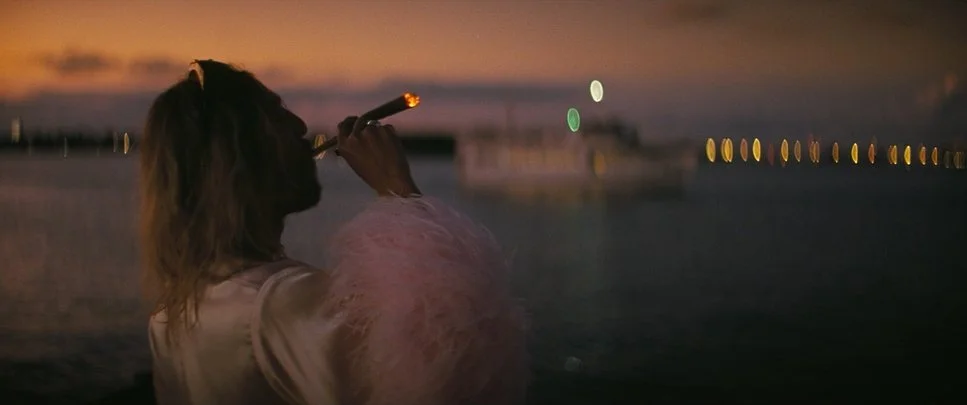Lenses and Perspective: How Glass Shapes the Story
When people talk about the “look” of a movie, they often mention lighting, color, and framing. But one of the most powerful and often under-appreciated tools in shaping a film’s visual language is the lens.
Lenses do more than just focus the image. They shape perspective, define spatial relationships, and control how the audience feels about what they’re seeing. Whether it’s the distorted intimacy of a wide-angle lens or the voyeuristic compression of a telephoto, the glass in front of the camera is as important as what’s in front of it.
In this post, we’ll break down the core types of lenses, how they influence storytelling, and why great cinematographers choose lenses not just for what they see but for what they say.
Why Lenses Matter in Cinematography
Every lens has a focal length, measured in millimeters (mm), which affects:
Field of view – how much of the scene is captured
Perspective – how objects relate to each other in space
Depth of field – how much of the image is in focus
But more importantly, every lens changes how we emotionally experience a shot. The choice of lens influences:
How close or far we feel from a character
Whether the scene feels intimate or distant
The rhythm and energy of the visual storytelling
Types of Lenses and Their Cinematic Effects
(I’m referring to shooting with a Super 35 sensor or 35mm film when comparing these focal lengths. The numbers and affects of change vary on different sensor sizes)
1. Wide-Angle Lenses (14mm–35mm)
What it does:
Captures a broad field of view and exaggerates space. Lines converge dramatically, and objects closer to the camera appear disproportionately large.
Emotional effect:
Feels immersive, dynamic, and sometimes disorienting. Can create tension or energy. Also enhances visual comedy or unease.
🎬 Example: Del Sol Salon - “Endless Summer” 2023
2. Standard Lenses (35mm–50mm)
What it does:
Roughly mimics the natural perspective of the human eye. Balanced and neutral in appearance.
Emotional effect:
Feels honest, unobtrusive, and intimate. Great for dialogue and character-driven scenes.
🎬 Example: Mango - “Mediterranean Dream” 2021
Standard lenses create a grounded, observational style that supports the film’s naturalistic tone and emotional focus.
3. Telephoto Lenses (85mm–300mm+)
What it does:
Compresses space—backgrounds feel closer to the subject. Narrow field of view isolates the subject from its environment.
Emotional effect:
Feels distant, voyeuristic, or even claustrophobic. Often used to highlight emotional isolation or tension.
🎬 Example: The Curious Case of Benjamin Button - 2008
4. Anamorphic Lenses
What it does:
Anamorphic lenses squeeze a wide image onto the sensor, later unsqueezed in post to achieve a 2.39:1 widescreen aspect ratio. They introduce unique flares, bokeh, and subtle distortion.
Emotional effect:
Feels cinematic, epic, and stylized. Often used to elevate the visual world and create visual poetry.
🎬 Example: The Beach Bum - 2009
Lens Choice and Character Perception
The lens you choose alters how we perceive the subject, especially human faces.
A wide lens close to a character can exaggerate facial features, making them feel vulnerable, exposed, or eccentric.
A telephoto lens compresses and flatters facial features, adding elegance or emotional distance.
A long lens from a distance makes us feel like we’re observing from afar—sometimes intruding.
A short lens up close makes us feel like we’re in the moment with the character.
Extreme close-ups with wide lenses intensify the characters’ psychological unraveling, distorting their world and drawing viewers uncomfortably close.
Perspective and Storytelling Style
Lens choices also help define a film’s visual identity:
Wide lenses = kinetic, raw, expansive
Standard lenses = natural, grounded
Telephoto lenses = isolating, elegant, restrained
Anamorphic = stylized, grand, surreal
Final Thoughts
Lenses are more than just tools, they’re narrative instruments. The focal length you choose can shift the emotional weight of a scene, influence how a character is perceived, and even define the rhythm of a film’s visual language.
Next time you watch a movie, look beyond what’s being shown and think about how it’s being shown. What lens are you seeing the story through? Because in cinema, glass shapes the gaze and the gaze shapes the story.



